#astroimages
Explore tagged Tumblr posts
Text
Webb's Dazzling Collection Unveiled: A Mosaic of 19 Face-On Spiral Galaxies
In an exciting release on January 29, 2024 - Webb's Dazzling Collection Unveiled: A Mosaic of 19 Face-On Spiral Galaxies - For the latest discoveries visit www.jameswebbdiscovery.com - In a groundbreaking revelation, a treasure trove of mesmerizing images captured by NASA's James Webb Space Telescope has just been made public, showcasing face-on spiral galaxies in near- and mid-infrared brilliance. For centuries, humanity has meticulously mapped Earth's features, advancing our understanding through sophisticated instruments. This extraordinary collection, featuring 19 face-on spiral galaxies, reveals stars, gas, and dust on a minute scale beyond our own galaxy.
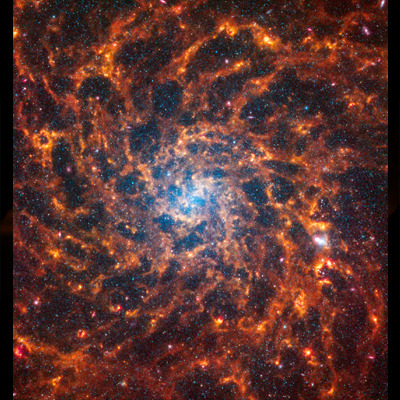
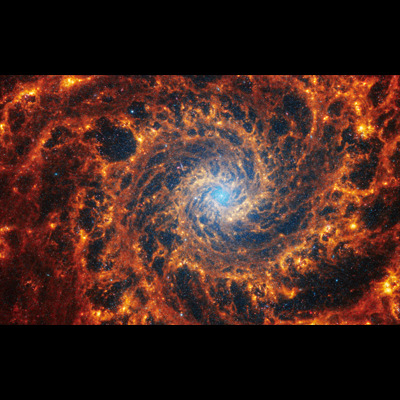
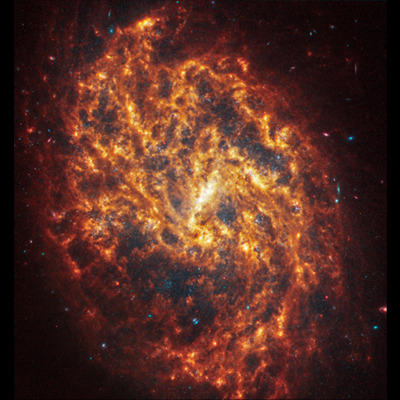
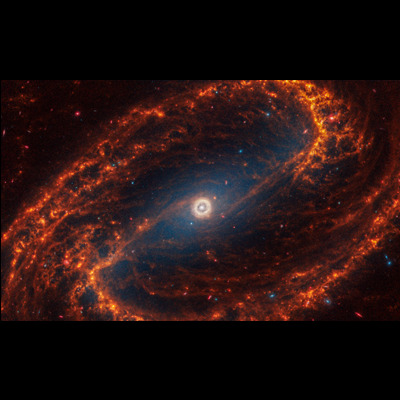
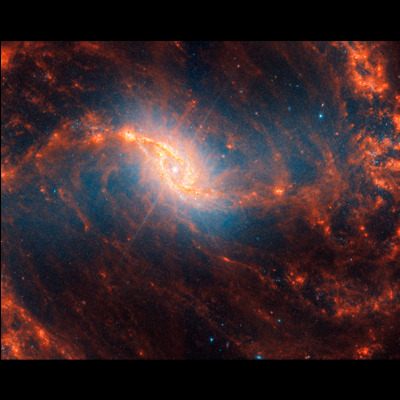
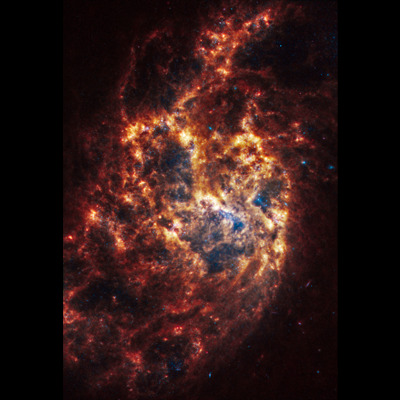

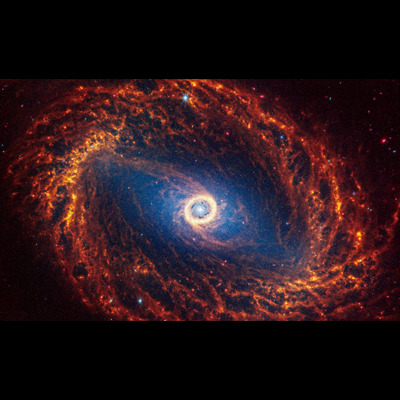
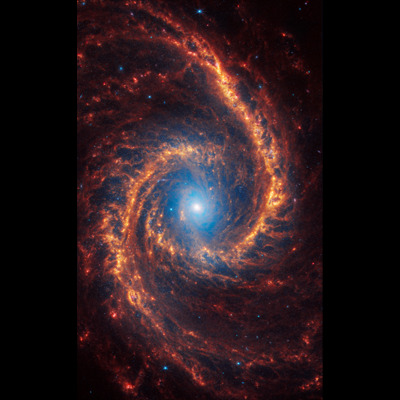


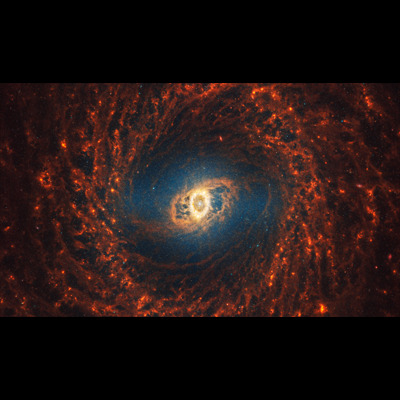
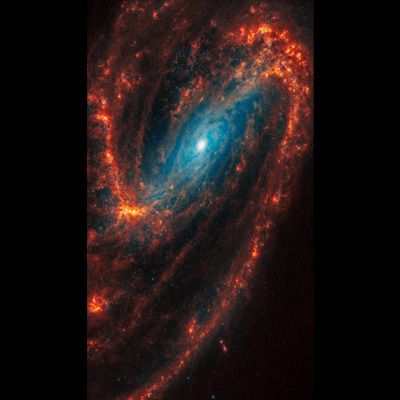
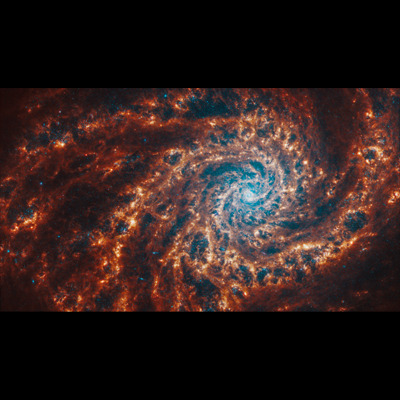
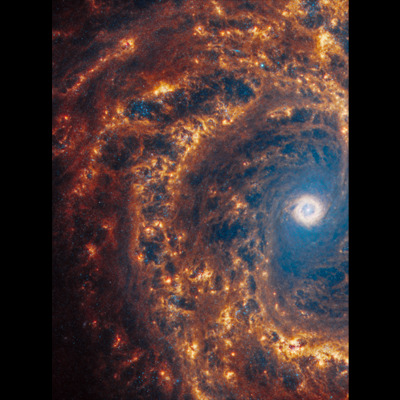
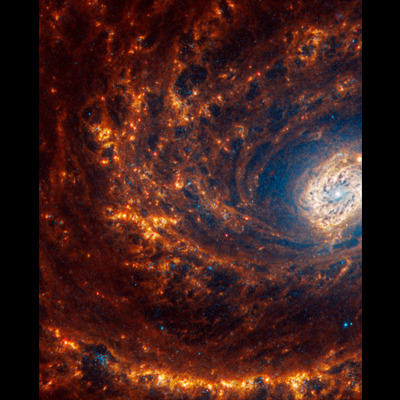

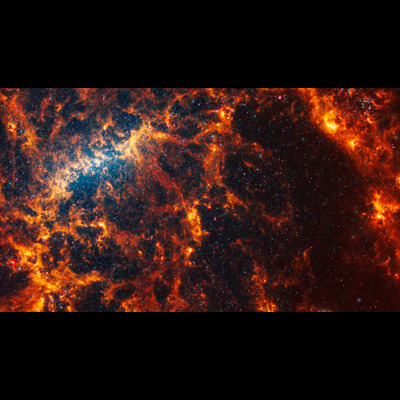
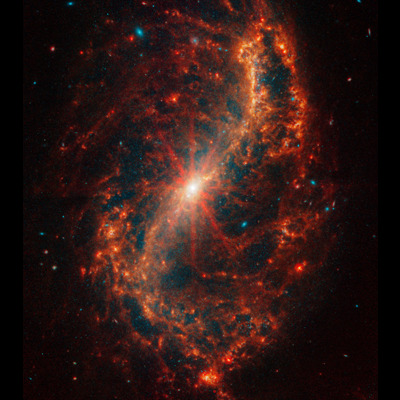
#WebbGalaxies#SpaceRevelation#GalacticWonders#WebbTelescope#CosmicDiscovery#SpiralGalaxies#AstronomyBreakthrough#PHANGSProgram#StellarEvolution#WebbvsHubble#NASAInsights#StarFormationCycle#InfraredExploration#AstroImaging#GalacticJourney#WebbImages#CosmicBeauty
33 notes
·
View notes
Photo
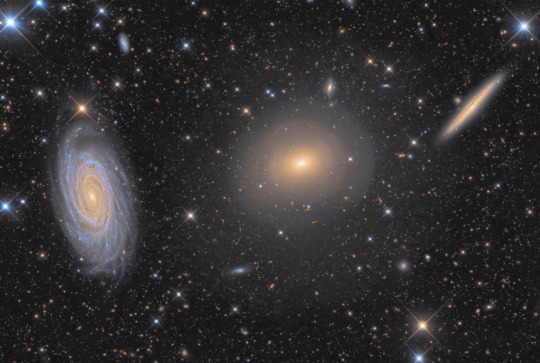
2023 July 1
Three Galaxies in Draco Image Credit & Copyright: David Vernet , Jean-François Bax , Serge Brunier, OCA/C2PU
Explanation: This tantalizing trio of galaxies sometimes called the Draco Group, is located in the northern constellation of (you guessed it) Draco, the Dragon. From left to right are face-on spiral NGC 5985, elliptical galaxy NGC 5982, and edge-on spiral NGC 5981, all found within this single telescopic field of view that spans a little more than the width of the full moon. While the group is far too small to be a galaxy cluster, and has not been catalogued as a compact galaxy group, the three galaxies all do lie roughly 100 million light-years from planet Earth. Not as well known as other tight groupings of galaxies, the contrast in visual appearance still makes this triplet an attractive subject for astroimagers. On close examination with spectrographs, the bright core of striking spiral NGC 5985 shows prominent emission in specific wavelengths of light, prompting astronomers to classify it as a Seyfert, a type of active galaxy. This impressively deep exposure hints at a faint dim halo along with sharp-edged shells surrounding elliptical NGC 5982, evidence of past galactic mergers. It also reveals many even more distant background galaxies.
∞ Source: apod.nasa.gov/apod/ap230701.html
98 notes
·
View notes
Photo
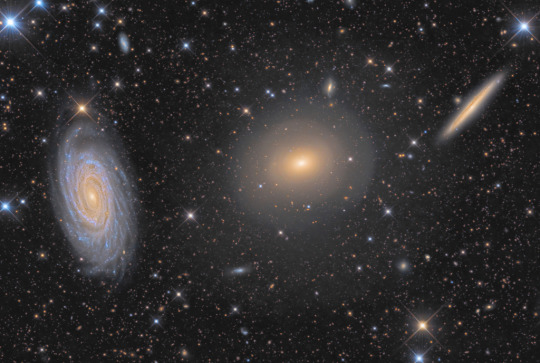
Three Galaxies in Draco via NASA https://ift.tt/3P6xSZG This tantalizing trio of galaxies sometimes called the Draco Group, is located in the northern constellation of (you guessed it) Draco, the Dragon. From left to right are face-on spiral NGC 5985, elliptical galaxy NGC 5982, and edge-on spiral NGC 5981, all found within this single telescopic field of view that spans a little more than the width of the full moon. While the group is far too small to be a galaxy cluster, and has not been catalogued as a compact galaxy group, the three galaxies all do lie roughly 100 million light-years from planet Earth. Not as well known as other tight groupings of galaxies, the contrast in visual appearance still makes this triplet an attractive subject for astroimagers. On close examination with spectrographs, the bright core of striking spiral NGC 5985 shows prominent emission in specific wavelengths of light, prompting astronomers to classify it as a Seyfert, a type of active galaxy. This impressively deep exposure hints at a faint dim halo along with sharp-edged shells surrounding elliptical NGC 5982, evidence of past galactic mergers. It also reveals many even more distant background galaxies.
6 notes
·
View notes
Text
Celestron - NexYZ DX Kit - 3-Axis Universal Smartphone Adapter - Digiscoping Smartphone Adapter - Bluetooth Shutter Release Remote – Capture Images and Video Through Your Telescope or Spotting Scope
Price: (as of – Details) The NexYZ DX Kit is a great way to step into the world of astroimaging and digiscoping. This universal adapter kit provides you everything you need to capture sharp, detailed images and video. NexYZ’s patented design fits any eyepiece from 35mm to 60mm in diameter, including telescopes with 1.25-inch and 2-inch eyepieces, spotting scopes, monoculars, and binoculars.…
0 notes
Text

APOD: Three Galaxies in Draco (7/1/23) This tantalizing trio of galaxies sometimes called the Draco Group, is located in the northern constellation of (you guessed it) Draco, the Dragon. From left to right are face-on spiral NGC 5985, elliptical galaxy NGC 5982, and edge-on spiral NGC 5981, all found within this single telescopic field of view that spans a little more than the width of the full moon. While the group is far too small to be a galaxy cluster, and has not been catalogued as a compact galaxy group, the three galaxies all do lie roughly 100 million light-years from planet Earth. Not as well known as other tight groupings of galaxies, the contrast in visual appearance still makes this triplet an attractive subject for astroimagers. On close examination with spectrographs, the bright core of striking spiral NGC 5985 shows prominent emission in specific wavelengths of light, prompting astronomers to classify it as a Seyfert, a type of active galaxy. This impressively deep exposure hints at a faint dim halo along with sharp-edged shells surrounding elliptical NGC 5982, evidence of past galactic mergers. It also reveals many even more distant background galaxies. © David Vernet , Jean-François Bax , Serge Brunier
0 notes
Text
Steve Bellavia is a master amateur astroimager and works as a research engineer at Brookhaven Laboratories. He has most recently worked on the camera integration for the Vera Rubin Telescope, due for first light in the near future.
He also gives excellent lectures and is a personal friend.
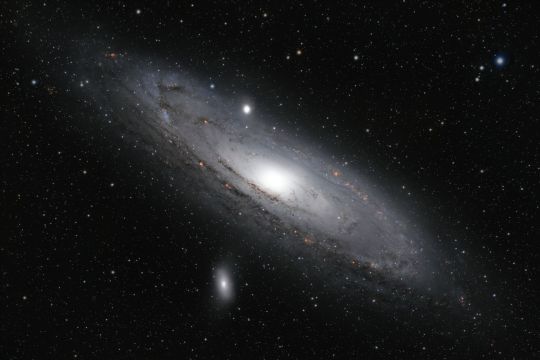
The spiral galaxy next door
View at EarthSky Community Photos
Steven Bellavia in Mattituck, New York, shared this detailed image of the Andromeda galaxy: the closest spiral galaxy to our home galaxy, the Milky Way. It's only about 2.5 million light-years away. The Andromeda galaxy probably looks like our Milky Way in space. It's slightly bigger than our Milky Way, but similar in mass, a vast star island with dark lanes of dust and places where new stars are forming. Steven said he put together his last 2 years of data on this galaxy - a total of 57 hours - to create this composite image. He wrote: "The star-forming regions appear as small red 'knots' in and beyond the spiral arms. And the collections of young, hot blue stars appear as blue regions." Great work, Steven, thank you!
10 notes
·
View notes
Photo
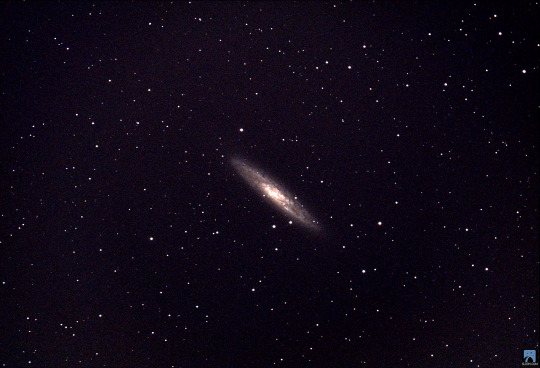
This is the Silver Coin Galaxy! 💫💫💫
This intermediate spiral galaxy was found when famous astronomers Caroline Herschel was searching for comets in the night sky. At the center of the populated Sculptor galaxy group, this galaxy is one of the brightest and most active galaxies in the Milky Way’s vicinity! ���✨✨
Taken by me (Michelle Park) using the Slooh Canary Two telescope on July 20th, 2022 at 4:57 UTC.
#astroimages#astro#astronomy#astrophysics#universe#space#night#telescope#telescopes#astrophotography#photography#galaxy#galaxies#spiral galaxy#spiral galaxies#silver coin galaxy#active galaxy#slooh#slooh canary two#nightsky#stars#star
231 notes
·
View notes
Photo

The Exploding Galaxy is a starburst galaxy which may have been deformed by M81, another neighboring galaxy. 🌌
Starting in April 2010, the Exploding Galaxy started sending out strange radio signals and scientists to this day don’t understand them yet... 👽👽👽
Taken by me (Michelle Park) using the Slooh Canary Two telescope on April 19th, 2020 at 21:57 UTC.
#astroimages#astro#astrophotography#universe#galaxy#galaxies#explosion#exploding#aliens#starburst#space#nasa#telescope
25 notes
·
View notes
Photo
spacettf:
Markarian’s Chain by Astroimager on Flickr.
Makarians Chain

16 notes
·
View notes
Photo
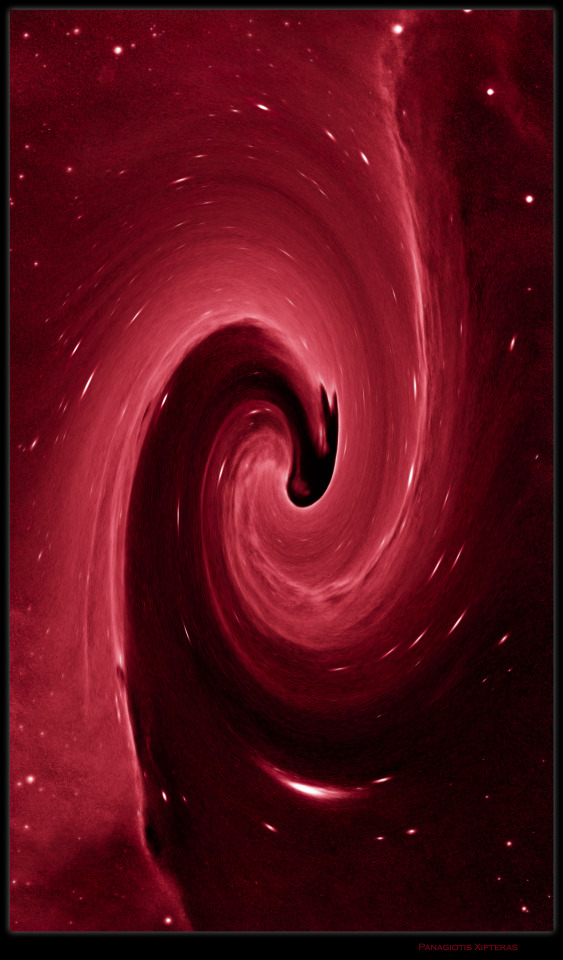
The Horsehead Nebula (Black Hole Edition)
1 note
·
View note
Photo

Mysterious Space Blobs,
Jack Ciurlo Astroimage
#universe#cosmos#cosmic#blobs#mystery#space wallpaper#space#milky way#galaxy#Black Hole#smbh#astroimage#jack ciurlo
9 notes
·
View notes
Photo
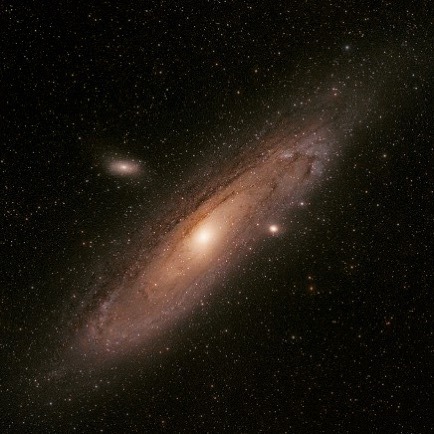
#andromedagalaxy reprocessed using some new tricks to pull out colour and additional detail. #astrophotography #astroimaging #stars #galaxy #nightskyphotography #dso (at Napanee, Ontario) https://www.instagram.com/p/B8GDTk3l3_c/?igshid=45oyavderg0i
1 note
·
View note
Text
Astroimager manual

#Astroimager manual drivers#
#Astroimager manual driver#
The NexStar+ hand control gives you instant access to all. The Advanced VX mount includes ports for a hand control, an autoguider, and 2 AUX ports for optional accessories. The computerized GoTo capability automatically tracks objects as they move across the night sky. If you want to use AstroImager, AstroGuider and AstroTelescope, you can consider to purchase INDIGO A1 (All-in-One) application instead.ĪstroImager is a member of our astrophotography tools family including also AstroDSLR, AstroTelescope, AstroGuider, FITS Preview, INDIGO Server for OS X, INDIGO Control Panel, INDIGO Dashboard, INDIGO Script Editor, Astrometry for OS X and INDIGO Sky linux distribution for RaspberryPi. The Advanced VX is the smallest of Celestron’s German equatorial mounts. Sequences of images can be saved in video formats including AVI and SER as well.Įven if it can be used separately, it is meant to be used together with AstroTelescope and AstroGuider. Images are stored in FITS, XISF, TIFF or JPEG formats with user defined keywords and can be debayered during preview. It can preview or capture and save images with any count, duration and time lapse, browse captured images, zoom and stretch them automatically or manually, measure FWHM, HFD and the drift of a selected star and plate-solve image using public or local service.ĪstroImager has simple sequencer to capture sequences of images with configurable duration, time lapse, count, base file name, binning and filter. Lunatico Limpet/Armadillo/Platypus Focuser/Rotator/Powerbox drivers,ĪSTROMECHANICS ASCOM Canon EF Lens Controller focuser driver,Īstromi.ch MGBox v1/v2, MBox, MGPBox and PBox driver,īut it can be used as a client to any remote or local INDIGO server with any supported cameras, filter wheel or focuser as well.ĪstroImager also controls the set point cooling and the mechanical shutter of the attached camera (if available). PegasusAstro DMFC and FlatMaster drivers,ĭeep Sky Dad AF1, AF2 and AF3 focuser driver,īaader Planetarium SteelDrive II focuser driver,ĪstroGadget FocusDreamPro focuser driver,
#Astroimager manual driver#
Trutek (TruTech) wheel driver (untested),īrightstar Quantum wheel driver (untested), Moravian Instruments CCD and wheel driver, SBIG CCD and filter wheel driver (vendor SDK must be installed, Intel only),
#Astroimager manual drivers#
QHY CCD and filter wheel drivers (Intel only), IIDC CCD driver (both USB and FireWire cameras), ZWO ASI CCD, wheel and focuser drivers (doesn't work with non-S ASI120MM/MC, Intel only), In this version the built-in INDIGO drivers support the following hardware:ĬCD, focuser and wheel simulator drivers, AstroImager is a powerful, but easy to use image capture application for the astrophotography.

0 notes
Photo

NGC 6888: The Crescent Nebula : NGC 6888, also known as the Crescent Nebula, is a about 25 light-years across blown by winds from its central, bright, massive star. A triumvirate of astroimagers ( Joe, Glenn, Russell) created this sharp portrait of the cosmic bubble. Their telescopic collaboration collected over 30 hours of narrow band image data isolating light from hydrogen and oxygen atoms. The oxygen atoms produce the blue-green hue that seems to enshroud the detailed folds and filaments. Visible within the nebula, NGC 6888's central star is classified as a Wolf-Rayet star (WR 136). The star is shedding its outer envelope in a strong stellar wind, ejecting the equivalent of the Sun's mass every 10,000 years. The nebula's complex structures are likely the result of this strong wind interacting with material ejected in an earlier phase. Burning fuel at a prodigious rate and near the end of its stellar life this star should ultimately go out with a bang in a spectacular supernova explosion. Found in the nebula rich constellation Cygnus, NGC 6888 is about 5,000 light-years away. via NASA
487 notes
·
View notes
Photo

NGC 6888: The Crescent Nebula via NASA https://ift.tt/2S8Qf7W
NGC 6888, also known as the Crescent Nebula, is a about 25 light-years across blown by winds from its central, bright, massive star. A triumvirate of astroimagers ( Joe, Glenn, Russell) created this sharp portrait of the cosmic bubble. Their telescopic collaboration collected over 30 hours of narrow band image data isolating light from hydrogen and oxygen atoms. The oxygen atoms produce the blue-green hue that seems to enshroud the detailed folds and filaments. Visible within the nebula, NGC 6888's central star is classified as a Wolf-Rayet star (WR 136). The star is shedding its outer envelope in a strong stellar wind, ejecting the equivalent of the Sun's mass every 10,000 years. The nebula's complex structures are likely the result of this strong wind interacting with material ejected in an earlier phase. Burning fuel at a prodigious rate and near the end of its stellar life this star should ultimately go out with a bang in a spectacular supernova explosion. Found in the nebula rich constellation Cygnus, NGC 6888 is about 5,000 light-years away.
(Published June 17, 2021)
56 notes
·
View notes
Photo
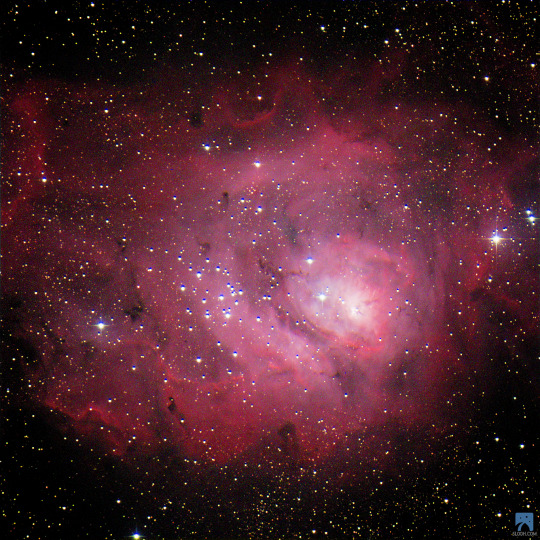
This is the Lagoon Nebula! 💗💗💗
The beautiful lagoon shaped portion is created from aggressive stellar winds pushing the nebulae’s gas and dust aside. Many of the stars here are young, hot O-type stars that are more than 200,000 times brighter than the Sun! ✨✨✨
Taken by me (Michelle Park) using the Slooh Canary Two telescope on July 23rd, 2022 at 22:31 UTC.
#astroimages#astro#astronomy#astrophysics#universe#space#night#telescope#telescopes#astrophotography#photography#slooh#slooh canary two#canary two telescope#lagoon nebula#messier 8#emission nebula#emission nebulae#nightsky#star#stars#nebula#nebulae#red#cosmos#aesthetic
170 notes
·
View notes